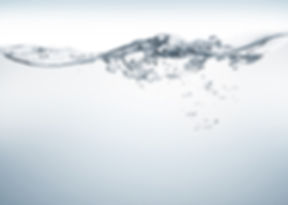
Source: CANALES MANUEL, CHWASTYK MATTHEW W. & CONAT EVE
Universe, Virgo Supercluster, Milky way, Orion Arm, Local Fluff, Solar System, Planet Earth(1. Your home, and my home. The blue planet. The only one known to support life and the thriving of plants, animals and civilization. Don’t you feel lucky? Well, you should feel grateful as most of the space out there is hostile to life. We are conveniently placed in the Goldilocks zone (2): “not too hot, not too cold. Just right”. Our planet revolves a stable Sun, at the right distance, in a zone free of deadly shooting meteorites, and accompanied by a small “buddy” that stabilizes our axis and causes the ocean tides. In addition to that, our atmosphere blocks harmful rays that could cause us severe skin problems. And the list goes on. But if there is one thing that deserves an honorable mention, it's Water.
Water is non-negotiable for life as we know it. From tiny bacteria, plants, fish, entire ecosystems, to you. Yes, you! Your body is pretty much 60% water, and for some other organisms that number can increase up to 90%. It is the habitat of at least 236,878 species (3) and big civilizations have risen and fallen because of it. You must be getting it by now: we all depend on water and couldn’t live without it. And guess what? There is plenty of it around. About 71% of the Earth’s surface is covered by water (4). And that’s where the nickname comes from: The blue planet.
But wait. Aren’t we talking about the same planet of the deserts and droughts? The one of which Ismael Serageldin, 1995 world bank vice president, said: “If the wars of this century were fought over oil, the wars of the next century will be fought over water” (5). How can our planet hold 1,386,000,000 km3 of water (6) and still face water scarcity? You might be asking. Well, the problem is actual availability and distribution of fresh water. Take a look at the figure below. Notice that all available water was removed from the planet and stored in a big sphere, over the USA. There is a small sphere on the right, and below it, an even smaller nearly invisible bubble. That’s the total amount of freshwater in all the rivers and lakes on the planet. That’s only 0.8% of the total fresh water available on Earth. And with increasing demand on water caused by population increase, the United Nations Water (UN-Water) predicts that by the year 2025, absolute water scarcity will be a reality affecting 1 800 million people around the globe (7).
What can we do then? Well, you can fix your leaky faucet, turn off the water when brushing your teeth, or practice smart lawn watering. While all of that is useful, action is also needed on a larger scale. Bear with me for a little while, and I will introduce you to two of these measures.

First, it is important to identify major uses of water in order to efficiently tackle water scarcity. According to a 2008 Food and Agriculture Organization’s (FAO) Report (8), “of all economic sectors, agriculture is the sector where water scarcity has the greatest relevance. Currently, agriculture accounts for 70 percent of global freshwater withdrawals, and more than 90 percent of its consumptive use”. And secondly, it is also important to safely return water to natural or human-managed cycles. According to the same FAO Report, water recycling and re-use is one of the options to cope with water scarcity. So, we have just identified two major strategies aiming at mitigation of water scarcity that are totally in line with floatmeal’s visions. Here in floatmeal, we have identified the huge potential of duckweed as a food for the future. We will use our technology to hydroponically farm it in a system that recycles and saves 90% of the water necessary for its growth, allowing us to conserve a 400 households-equivalent amount of water per year. Isn’t it amazing! Now, imagine thousands of social enterprises around the world with the same goal in mind: efficient crop farming, water-saving technologies and socially directed goals. We could make a huge impact, and floatmeal is definitely here with that purpose.
Remember Ismael Serageldin? I quoted him earlier. Actually, I intentionally left the last part of his statement for this moment. He actually said: “If the water of this century were fought over oil, the wars of the next century will be fought over water-UNLESS WE CHANGE OUR APPROACH”. Did you notice the last part? That’s the key to make a better future. Floatmeal is already giving important steps in that direction, and we count on you to help us “WATER THE FUTURE”.
References
1. Your Cosmic Address Will Remind You How Huge the Universe Really Is | Travel + Leisure. https://www.travelandleisure.com/trip-ideas/space-astronomy/earth-cosmic-address.
2. CANALES MANUEL, CHWASTYK MATTHEW W. & CONAT EVE. Six Things That Make Life on Earth Possible. https://www.nationalgeographic.com/magazine/2018/03/one-strange-rock-interactive-earth-solar-system-milky-way-galaxy/.
3. Did You Know...? Marine Life / Ocean Facts... ~ MarineBio Conservation Society. https://marinebio.org/creatures/facts/.
4. Water Facts - Worldwide Water Supply | ARWEC| CCAO | Area Offices | California-Great Basin | Bureau of Reclamation. https://www.usbr.gov/mp/arwec/water-facts-ww-water-sup.html.
5. (No Title). http://www.serageldin.com/Water.htm.
6. How Much Water is There on Earth? https://www.usgs.gov/special-topic/water-science-school/science/how-much-water-there-earth?qt-science_center_objects=0#qt-science_center_objects.
7. -Water, U. N. COPING WITH WATER SCARCITY A strategic issue and priority for system-wide action. (2006).
8. Coping with water scarcity : an action framework for agriculture and food security.
